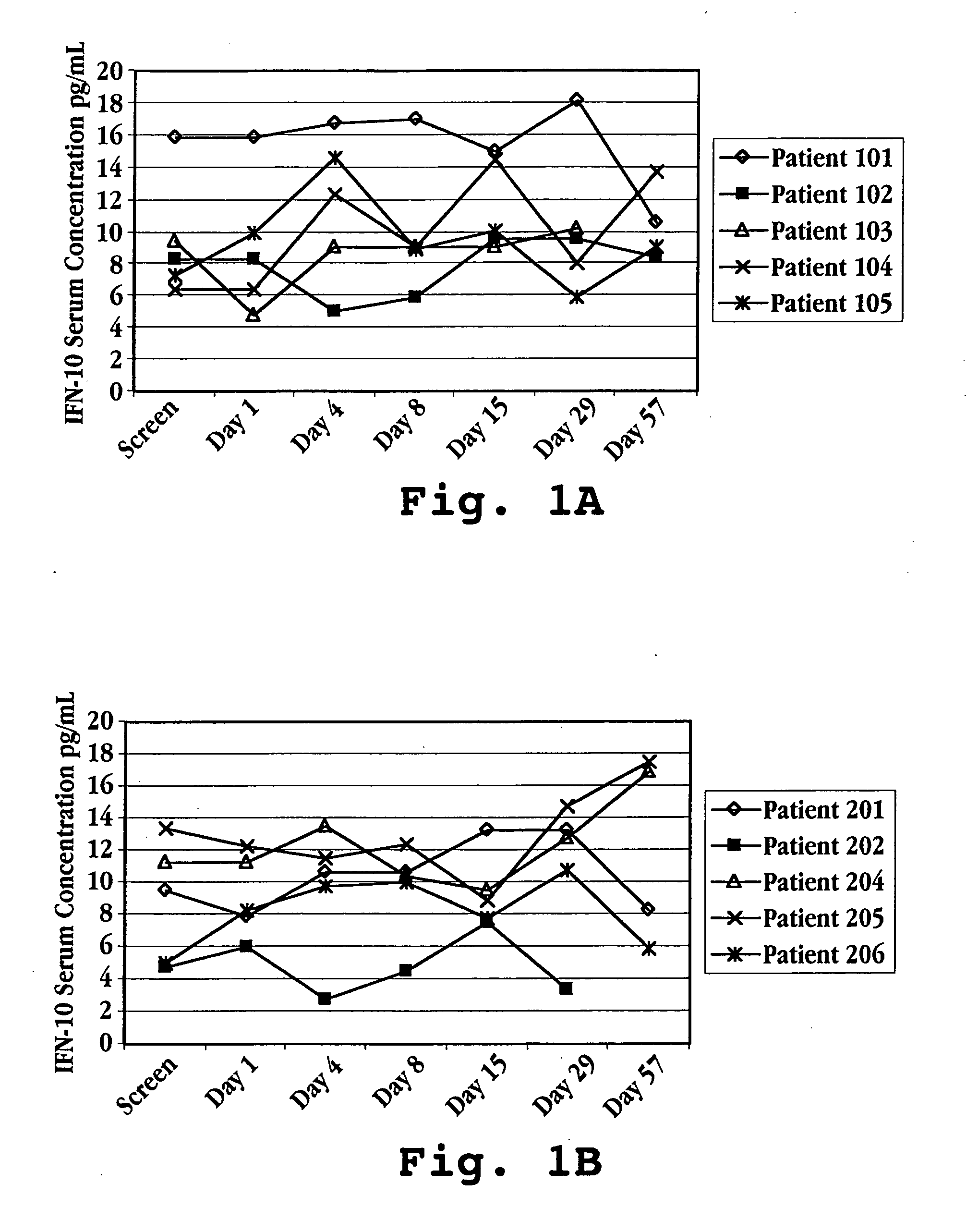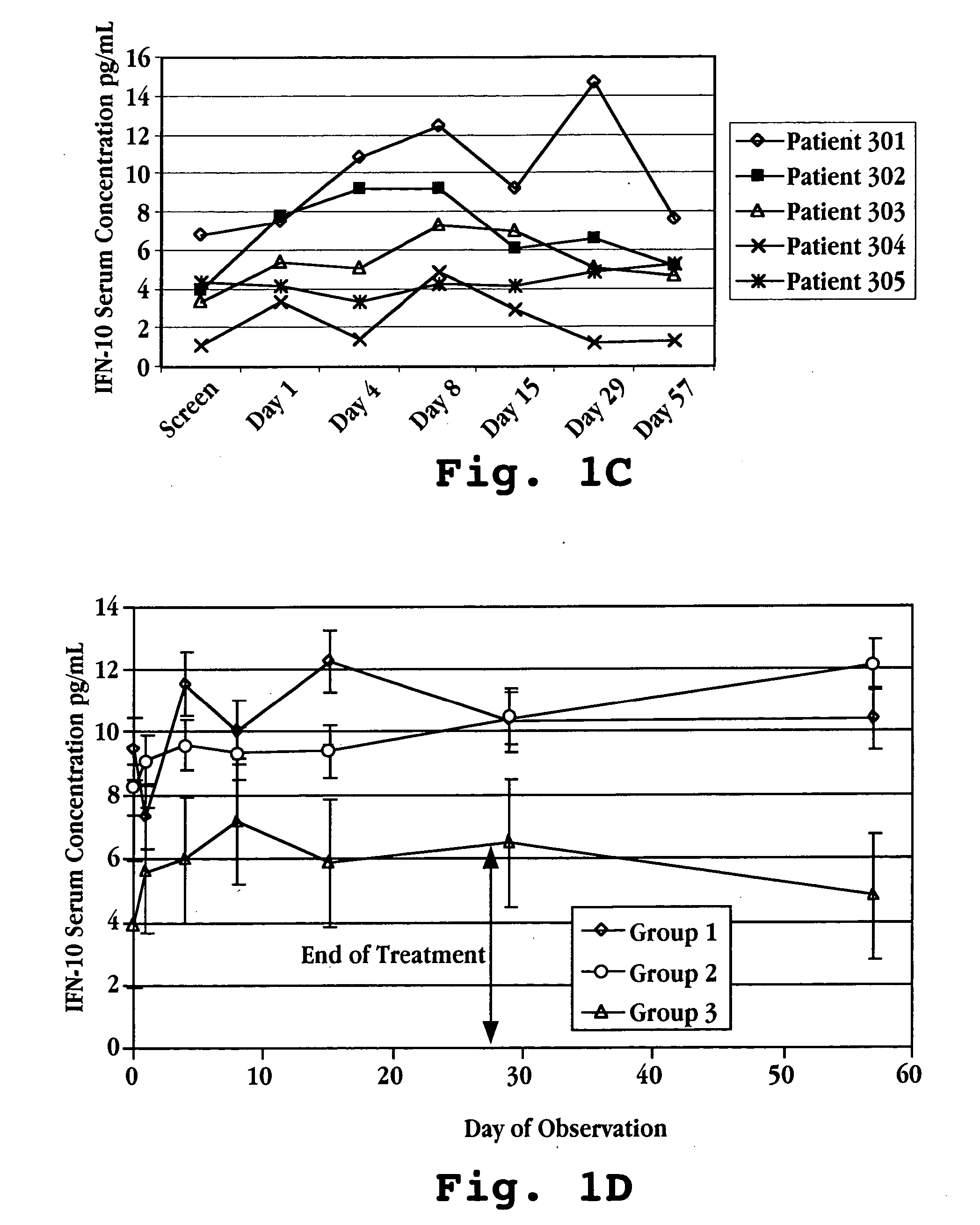Methods for reduction of scar tissue formation
- Summary
- Abstract
- Description
- Claims
- Application Information
AI Technical Summary
Benefits of technology
Problems solved by technology
Method used
Image
Examples
example 1
Increase in IL-10 Concentration
[0036] IFNτ increases IL-10 concentrations in humans, which results in a reduction in scar tissue formation, as demonstrated by the following data. Humans suffering from multiple sclerosis were enrolled in a trial for treatment with IFNτ. Fifteen patients were randomized into three treatment groups: Group I patients were given IFNτ orally at a dosage of 0.2 mg per day (2×107 U / day) Group II patients were given IFNτ orally at a dosage of 0.8 mg per day (8×107 U / day); and Group III patients were given IFNτ orally at a dosage of 1.8 mg per day (1.8×108 U / day).
TABLE AGroup IGroup IIGroup III(n = 5)(n = 5)(n = 5)IFNτ Oral Dose10.2 mg / day0.6 mg / day1.8 mg / day(2 × 107 U)(6 × 107 U)(1.8 × 108 U)Average Weight67.2 kg58.9 kg90.0 kgAverage Age3034.547
11 mg IFNτ = 1 × 108 Units
[0037] Prior to treatment with IFNτ, on screening Day and Day 1 (one), a blood sample was taken from each subject to determine a baseline serum cytokine concentration. Treatment was initi...
example 2
Inhibition of Scar Formation
[0040] Full thickness mouse wounds are made in adult mice, ranging in age from six weeks to sixteen weeks. Mice are treated daily with IFNτ administered topically to the wound site. Other mice are left untreated. The wounds are inspected daily, and at days 7, 14, and 21 post injury, histological micrographs of open mouse wounds are taken. Tissue biopsies taken at these time points are fixed, embedded, sectioned and stained with hematoxylin and eosin. Mice treated with IFNτ show a reduction in scar tissue formation.
example 3
Inhibition of Scarring During Wound Healing
[0041] Mice are treated essentially the same as described in Example 2, however, prior to injury, mice are pretreated for ten days with oral administration of IFNτ added to the feed. A separate group of control mice were left untreated before and after injury. One month after injury, the resulting scars were examined by histological analysis, in the control and treated mice. Mice treated with IFNτ show a reduced scar tissue thickness compared to the thickness of the scar formed in untreated mice.
PUM
| Property | Measurement | Unit |
|---|---|---|
| Fraction | aaaaa | aaaaa |
Abstract
Description
Claims
Application Information
 Login to View More
Login to View More - R&D
- Intellectual Property
- Life Sciences
- Materials
- Tech Scout
- Unparalleled Data Quality
- Higher Quality Content
- 60% Fewer Hallucinations
Browse by: Latest US Patents, China's latest patents, Technical Efficacy Thesaurus, Application Domain, Technology Topic, Popular Technical Reports.
© 2025 PatSnap. All rights reserved.Legal|Privacy policy|Modern Slavery Act Transparency Statement|Sitemap|About US| Contact US: help@patsnap.com


